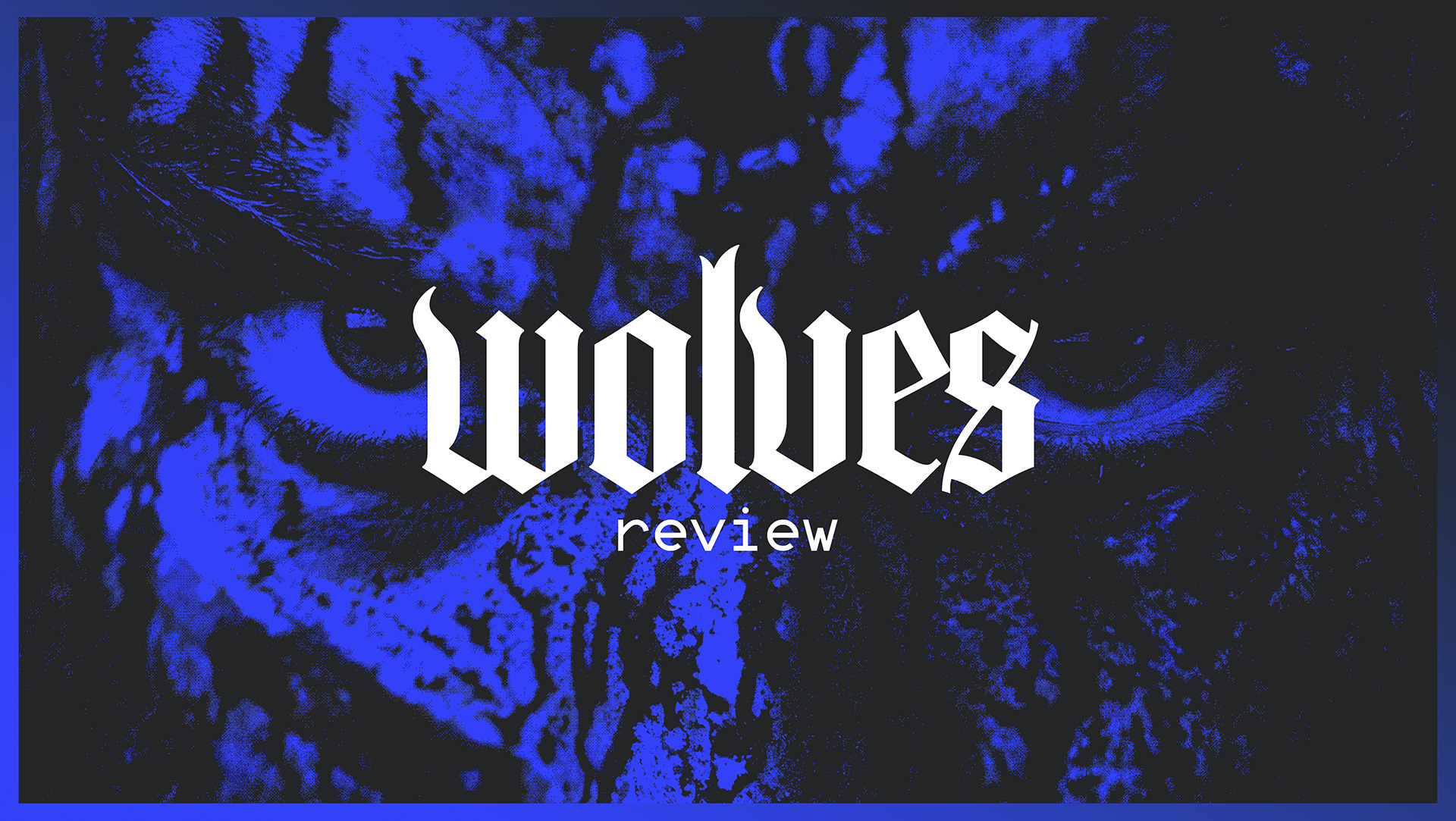If you hadn’t heard, I’m working on a game/setting called Adamiir.
Wait, don’t go! This is related, I promise! It’s not an ad!
Near the beginning of the text, I describe the System of Adamiir as follows:
Putting that into perspective is simple: character creation consists of a single page, whereas the general rules take two to three pages.
Meanwhile, a description of the coinage in the setting takes five pages.
The inspiration for this came chiefly from the truly excellent Wolves Upon the Coast by Luke Gearing, which I can’t recommend higher.
And, fittingly, will be the first review I’ve done on the Grinning Rat Newsletter.
In Wolves Upon the Coast, the text provides very straightforward character creation rules and a premise: you were a slave, your master is dead, you and your comrades in chains are stranded in a boat off the coast.
What do you do?
As a player, you roam, barter, beg, and boast across all realms in search of gold and glory. As the GM, you do any and all of the following:
Read the evocative location entries
Pore over the magic items and treasure
Sit in contemplation at the deceptively minimalist monster entries
Try to figure out exactly how you’d introduce the sprawling worldbuilding before realizing you, just like the PCs, have to start moving
Everything about the game feels simultaneously like an invitation to dive deeper and a warning that you’ll never fully understand what it’s trying to tell you. The Monster and Treasure books do this more than the WUTC core content does, where a monster description may look like this:
And a treasure entry may look like this:
These entries speak of a thing unspoken, of a world between the margins that you can start to dredge up in play. But doing so is hard and requires a different muscle than practicing procedures of parties crawling across the wilderness.
Not that it doesn’t have that either — the game goes into, frankly, a silly amount of detail as to what happens when two boats enter rivers, engage in combat, ram one another, and begin to sink.
But both of those things — the esoteric nature of the worldbuilding and the very precise nature of the mechanical minutiae — come from a similar place that I feel very passionate about:
Unapologetic honesty about what the game is.
Positive Reinforcement
There’s a very simple idea that gets tossed around the game design scene that goes something like this:
Usually, this results in game designers adding rewards for particular tasks, such as gaining experience points for resolving encounters or granting special abilities for clever roleplay. But rewards don’t necessarily need to be additive.
Sometimes, rewards are what the game explicitly tells you not to worry about.
This means that if you don’t want your players to go exploring, don’t include anything related to exploration in the rules. The same goes for combat, sailing ships, etc.
Or, rather than completely cutting them out, make them as streamlined as possible.
Players will inevitably find the most efficient way to achieve their goals, and despite the golden rule of RPGs (to have fun and not be a dick), players have one goal: to win.
I don’t mean ‘to win’ as a competitive thing; I mean that players are playing a game for a reason. It may be to resolve some issue in their backstory. It may be to spend time with friends. It may be to get a ridiculous amount of loot.
Whatever the case may be, players routinely and unconsciously attempt to win at their own perceived goals.
Wolves Upon the Coast (WUTC) mechanizes this with boasts.
A few wrinkles to keep things interesting:
If you shirk your boast, you lose any potential bonus and can never boast again.
If you fail, you lose the bonus but can always try again.
Another character can up the stakes by introducing complicating factors, adding another Hit Die or +1 Attack Bonus to the potential reward.
That said, if the challenger is refused, they must now take on the boast, including their complication.
Not only do boasts help reinforce the worldbuilding, where you’re Viking-adjacent adventurers pursuing greatness at all costs, but they also directly hone in on your player’s goal(s).
Notice also that the rewards for boasts are simple: health or better odds for attacks.
This is because, ultimately, from the beginning of the game to late into an adventurer’s career, the game's most immediately pressing objective is survival. You survived as a slave, you (hopefully) survive making it back to land on your master’s ship, and you (hopefully) survive the rest of your days slowly building back not just your freedom, but your agency.
And what grants agency more than allowing the players to go wherever they want and do whatever they want when they get there?
Show, Don’t Tell (As Much)
One of the hallmarks of a Gearing game is that the words are often a poetic amalgamation of what is present rather than a clinical detailing of measurements and occupants. You won’t find 15 x 15 rooms with a few barrels and a trapped door in Wolves.
Instead, you’ll find something like this:
All of the location entries are like this, with questions lingering in your mind upon reading them:
What was the previous occupation?
When was it?
What would it mean for neighboring hexes if the pyre were lit?
At first, this made me highly uncomfortable, and I wasted a lot of time flipping pages, assuming it was referencing something at some other location. Only in a select few cases was that true, which made me even more panicked.
But as I read and played, I realized this is precisely what I needed in play. I didn’t need a transcription of the exact moment-to-moment of the location, nor did I need a total inventory list of every possible lootable item. I knew how to do that through improvisation and running hundreds of sessions across multiple ttRPGs.
I needed evocative hooks, which Gearing was happy to provide. Across the entire campaign presented in WUTC, the hex map contains over 200 individual locations keyed, each written similarly to what is shown above in Belcarra.
Each one prompts the reader (or the players encountering it at the table) to investigate and think. But none of them feel overbearing or unnecessary. Everything feels tightly constrained and cleverly thought through in a way that makes me happy as a GM and absolutely green with jealousy as a designer.
Overall Thoughts & Inspirations for Adamiir
There’s a lot to Wolves that I didn’t cover because you should grab it yourself. The price tag is admittedly high - at $50 for PDFs, you really have to give a lot of quality content. Thankfully, that’s exactly what Gearing provides. Not a single bit of content is fluff or wasted space. Every word feels carefully chosen. Every location feels tied intrinsically to the world and the characters that exist within it.
In my opinion, the best games make you immediately want to write when you read or run them. That happened to me reading this, and it led directly to Adamiir. I don’t think any other ttRPG has done that for me in quite the same way.
“The best artists steal,” as the quote goes, and I have no shame in saying that I have stolen a lot from Wolves in making my own dark fantasy game. The way the locations are described gives hooks, not specific directions. I've found inspiration in how the treasures, monsters, and equipment imply history and lore, including everything down to the presentation and distribution model of the content itself.
Over on Luke’s blog, he describes how Wolves got started and the changes made over time. Starting at $5 and working his way up as content got added feels right to me — I’m starting at free and will increase the price once the alpha edition is out towards the end of the year (mostly due to imposter syndrome and fear of not finishing things 🫠).
I’ll leave you with something that Luke writes on his blog::
Agreed, agreed, agreed.

This article is brought to you by the following paid subscribers who make this newsletter possible:
Azzlegog
Colin
DSPaul
Michael Phillips
Mori
Space Pirate












